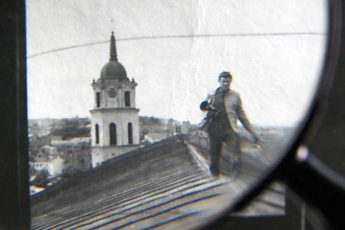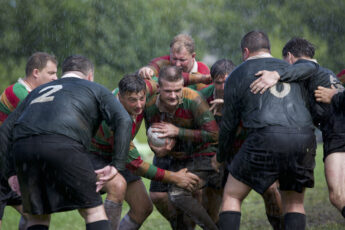Sunny Self-discovery Stories
Alanté Kavaïté’s The Summer of Sangaile (Sangailė, 2015)
Vol. 66 (Summer 2016) by Ana Ribeiro
With her second feature, Lithuanian-born filmmaker Alanté Kavaité makes a romantic return to her homeland. Having studied fine arts in France, where she started her career as a filmmaker, Kavaité has chosen her native Lithuania as the setting for a teenage, coming-of-age love story. Her first feature Fissures from 2006 was a dark mix of genres with an essentially French background that was unrevealing of the director’s origins. The Summer of Sangaile, on the other hand, is an all-too-classic coming-of-age story which bears the clear marks of Lithuania’s rural, pastel-colored countryside. The film tells the story of tormented city teenager Sangaile, a shy 17-year-old who is spending the summer at her wealthy parents’ estate in the countryside. There she meets the self-confident and artsy girl Austé. Guided by this dream-like creature, Sangailé finds her own identity while living her sexual awakening.
In fact, summer seems to be the season of sexual awakening, at least for gay women in recent European movies. Dutch film Zomer (2013) and French production Summertime (2015) not only refer to the season in their international (and national) titles, but also place the discovery of their female protagonists’ sexuality in that time frame. The Summer of Sangaile closely follows these films’ cliche-ridden construal of summer as the hottest time of the year, which yields useful plot devices: at the end of summer at least one of the characters normally has to leave the place where the story takes place, underscoring the transformation they have gone through.
The now worn-out filmic trope of the “Manic pixie dream girl” was coined in a 2007 review of Elizabethtown for the AV Club website. Originally describing the main female character in the film played by Kirsten Dunst (as well as Natalie Portman’s role in Garden State), Nathan Rabin stated that she represented a common type of quirky, optimistic but plain female character whose sole purpose in the narrative was to help a troubled male character (re)discover the “beauty” of life, while lacking a developed background story herself. Other film critics and commentators – most frequently referring to female characters in successful American “indie” films that became so popular in the 2000’s/2010’s – quickly adopted the label. The misogynist facet of the trope is maybe its most highlighted aspect and has reemerged in the media in the last couple of years, when feminist discourses apparently regained popularity among the youth.
Interestingly enough, The Summer of Sangaile recurs to these dynamics between the two protagonists, but in a homosexual relationship. Sangaile’s love interest Austé is presented as an ethereal being. Living in an artsy-surreal decor and keen on vintage fashion, Austé is aesthetically built as being unbound by space or time. While the spectator finds out more about Sangaile’s own story (how her bourgeois parents, specially her ex-ballerina mother, may interfere with her self-discovery; how she’s been self-harming; how she’s troubled by an allegorical fear of heights when she dreams of flying), Austé’s background remains virtually untold. All we know is her dreamy “allure”, and most of all, her interest in helping Sangaile accept herself so that she can overcome her angst.
Here the “manic pixie dream girl” is disconnected from its cliche misogynist reading: the trope is inadvertently used as another plot device that operates beyond the character’s gender, acting instead on the representation of the love relationship itself. In this coming-of-age story, Austé is just the catalyzer for Sangaile’s development as the “heroine” who will suffer significant transformation.
The Summer of Sangaile has some plastic highlights, but one cannot avoid the feeling of déjà-vu. Its narrative suffers from an excessive use of clichés of sexual-awakening films from the last 15 years: a teenager who self-harms, fearful of accessing non-heteronormative sexuality in summertime, is guided by a plain dreamlike character towards self-discovery. Worn-out ideas that could nevertheless help the film find an audience curious about this Lithuanian teenage daydream.




Leave a Comment